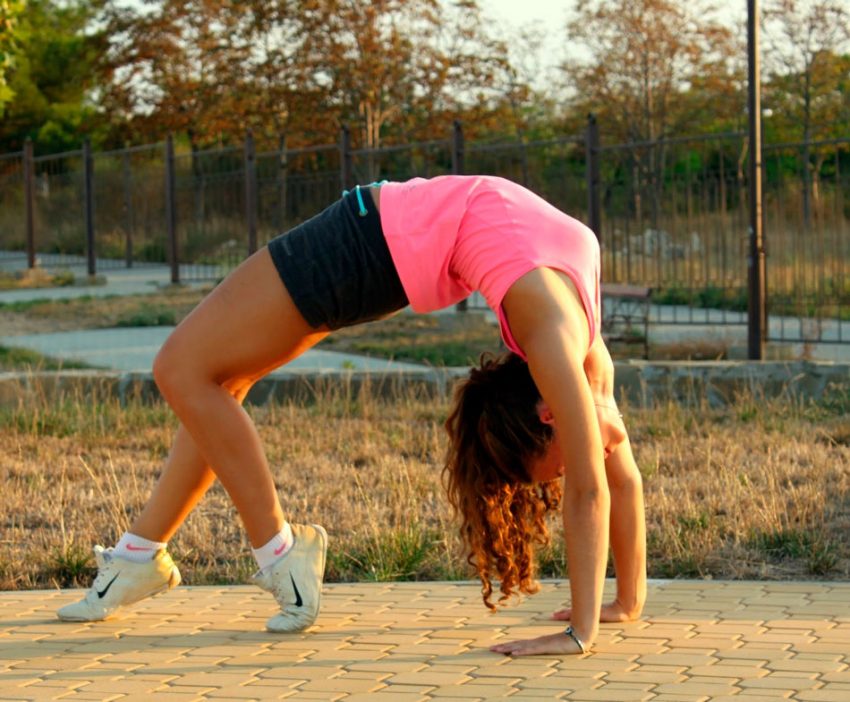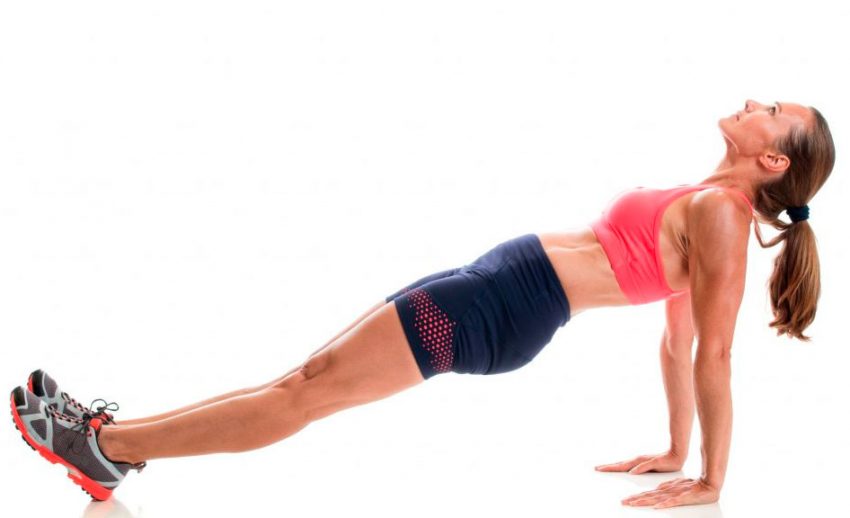The gymnastic bridge is not often seen in ordinary gyms. However, in the elevator shops – as much as necessary. It helps develop the mobility of the spine necessary for the bridge on the bench press, which is why big men and strong women give it about the same attention as schoolchildren in physical education class. Yes, yes, precisely because of the school, or rather, because of the incorrect setting of the technique by the physical education teacher, people are afraid of the bridge, they are sure that not everyone can get into it, and they do not want to practice it in adulthood. Meanwhile, almost every healthy person can learn, it’s all about a careful and thoughtful approach.
The benefits and harms of a gymnastic bridge

Exercise belongs to those that give children the first year of training in gymnastics. It is the babies who succeed very well, since their spine is not yet enslaved, and the shoulder joints are more mobile than in adults. The exercise engages almost all joints and ligaments of the body, and strengthens the muscles in statics. It teaches flexibility, mobility, but it is in gymnastics that it is used as a lead to dynamic elements.
Pros of exercise for an adult:
- corrects posture. Eliminates the habit of sitting, standing and walking, rounding the shoulders forward;
- strengthens the rhomboid and latissimus dorsi muscles;
- helps to increase the range of motion in the shoulder joint;
- removes a small kyphosis if done at an early age;
- strengthens all the muscles in the body;
- increases mobility in the hip joints;
- enhances blood flow to the long muscle of the back, nutrition of the bone marrow;
- strengthens the muscles of the legs and arms in statics;
- allows you to stretch the rectus abdominis muscle and contract the gluteal muscles.
The movement helps to release the tone of the rectus abdominis muscle and makes it possible to assume a neutral back position. In kinesiotherapy, it is one of the prophylactic and remedies for problems with the spine caused by prolonged sitting.
Contraindications

Contraindications include injuries to the shoulder and hip joints and the spine. The bridge can hurt when the shoulder joints are tight, even if the problem is not related to injury. In this case, the postural imbalance is first removed, that is, they teach the person to stand, walk and sit with a straight back and correctly deployed shoulders, and then they train to stretch on the bridge.
The list of contraindications for exercise is as follows:
- pregnancy;
- hernia and protrusion of the spine;
- arthritis and arthrosis of the shoulder, hip, knee and ankle joints;
- epilepsy and brain disorders;
- osteochondrosis and pain syndrome that accompanies it;
- the consequences of mechanical injuries.
How to learn how to make a bridge

There are two versions of taking the desired body position:
- the so-called bridge from the floor, when the athlete is pushed into the reverse position, makes a deflection in the chest and remains in this position as long as necessary;
- bridge from the rack, that is, deflection in the lumbar and thoracic spine, with the hands on the floor. This option is the most difficult one.
Before stretching on the bridge, you need to eliminate those problems that may interfere with the exercise. As a rule, this is low mobility in the shoulder, knee or hip joint.
Lead exercises
Lead-up exercises to the bridge help increase the mobility of the desired joints, strengthen the back, and develop the necessary flexibility and balance. Lead-in exercises are simpler than target movement, but they prepare the body for the main exercise.
Superman

- Lie face down on the floor
- Tear off the chest and legs at the same time
- Strain your back statically while you hold at the top for 1-2 seconds. Do 10-12 reps for 3-4 sets.
Gluteal bridge

The gluteal bridge, executed from the floor, completely repeats the initial phase of the movement. It consists in lifting the buttocks off the floor so that the back does not come off, and the movement is uniform.
Technically it is done like this:
- Lying on the floor, place your feet 10-12 cm from the buttocks;
- Push off the floor with your feet, and tear off the pelvis, pushing it up;
- At the top point from the knees to the shoulders – a straight line, the buttocks are tightened and tense;
- The floor only touches the feet and shoulders, if performed as an approach exercise,
- The descent is also smooth.
The bridge is done in the same way in 10-12 repetitions of 3-4 working approaches.
Reverse plank

Exercise is necessary in order to increase the mobility in the shoulder joint. It is also used as a guide to open the chest and strengthen the arms. Many people cannot do it the first time, then you should put your arms a little wider, and focus on the smoothness of the movement. As soon as the exercise becomes more comfortable for the upper body, you can put your arms down.
The technique is as follows:
- Sit on the floor, stretch your legs, tighten your quads, pull your toes;
- Put your palms behind you behind your back, rest on the floor;
- Direct the fingers to the feet;
- Push off the floor, go out in a straight line then the socks to the base of the neck;
Tighten your abs and stay in this position for 20-50 seconds.
Repeat the exercise several times.



